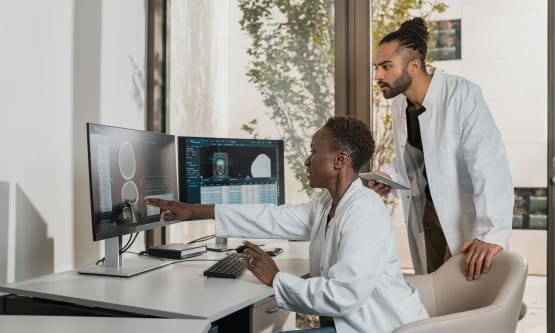Don’t forget IT input when planning PACS
- 8 June 2004
Beware of overlooking vital IT input when planning a new digital picture archiving and communications system (PACS), the UK Radiology Congress heard this week.
A guide to some of the IT elements that can be forgotten – and some of the implementation techniques that work – was provided for the UK Radiological Congress in Manchester by Simon Harden, director, information systems, East Sussex Hospitals NHS Trust.
As radiology departments gear up to embrace the new PACS initiative recently announced by the National Programme for IT, Harden delivered a timely reminder of good practice and shared some lessons learned in PACS development in East Sussex.
He urged PACS novices to first identify who was leading the work. ‘A very strong minded, strong willed radiologist’ was his choice for the leader – though not for the person to run the system when after it went live. Very structured project management was essential too with a project manager trained in PRINCE 2.
In making the business case for PACS, Harden advised: ‘There are a lot of IT costs that get left out such as extra PCs, changes in networking and interfaces with other systems. If your PACS is going to work well it needs to talk to a lot of other systems around the hospital.’
In practice, he reported seeing a business case where the PACS vendor’s interface costs were calculated but the charges levied by the other systems suppliers were overlooked. Testing out the interfaces thoroughly is also essential.
On networking, he counseled PACS teams to do their own exact survey of needs rather than rely on suppliers who tended to make general statements based on their experience of other implementations. This was particularly relevant when PACS access at remote sites such as minor injury clinics was being considered.
Servers were another issue. ‘When buying a PACS you will be amazed how many servers you need to buy,’ Harden observed. An agreement was also needed on where the servers would sit. He advised that the radiology department was probably not the best environment.
On the question of calculating the number of desktop PCs needed, he suggested a two pronged approach: first, an audit to count exactly how many desktops were available already and second, a very clear conversation with users about what their requirements would be.
When the system goes live, a systems manager would also be needed to run the PACS. ‘My suggestion is that the job should be in the radiology department,’ he said, but added that the manager needed a designated person in IT to consult with.
Clear procedures were also needed for backing up images and for problem reporting around the clock.
Training was not on Harden’s list of IT responsibilities. ‘I don’t believe it should be done by the IT department. Training should be organised within the radiology department. Radiology staff should be driving the process,’ he advised – part of a general approach of encouraging the radiology department to run with its PACS.



